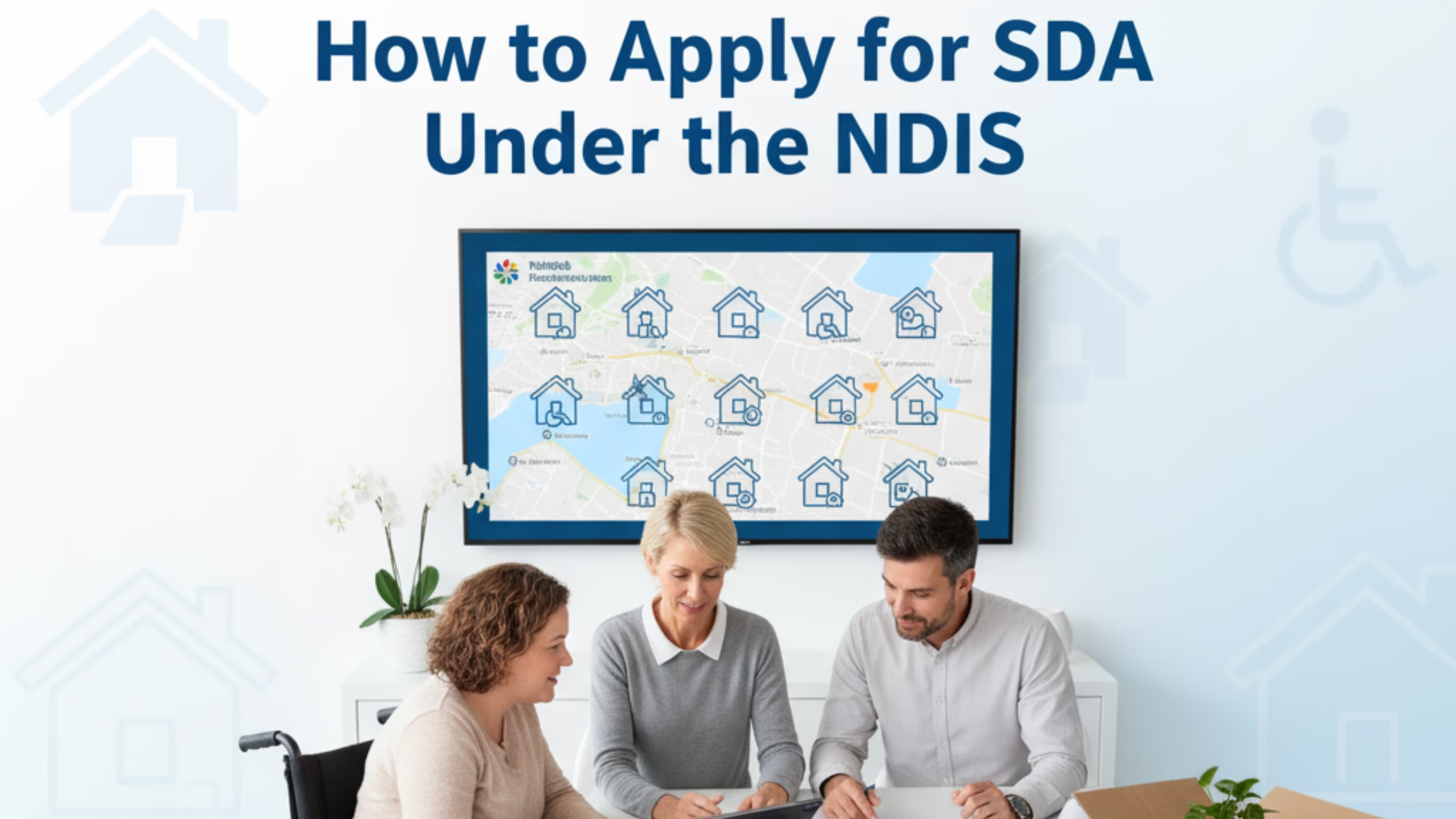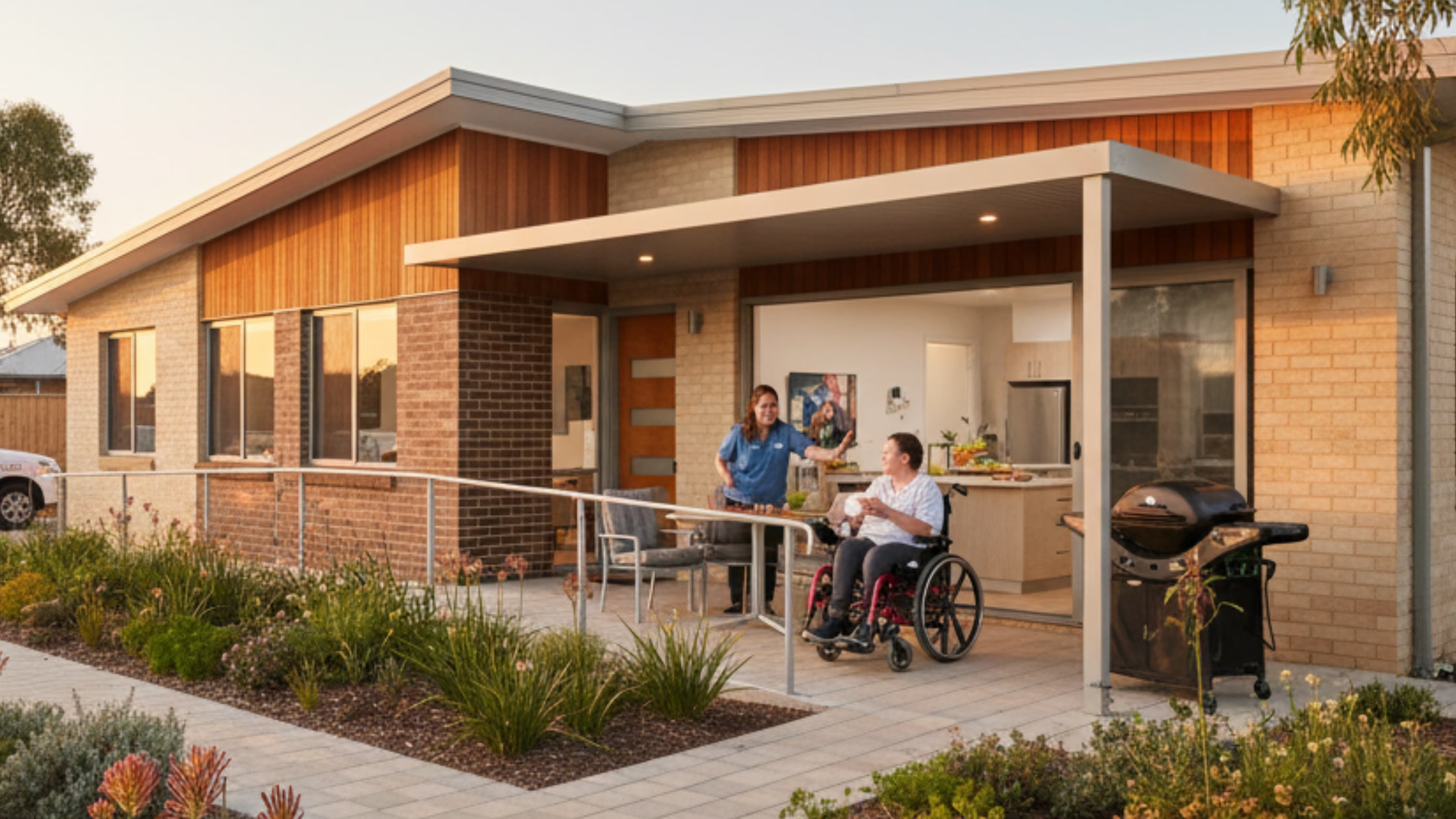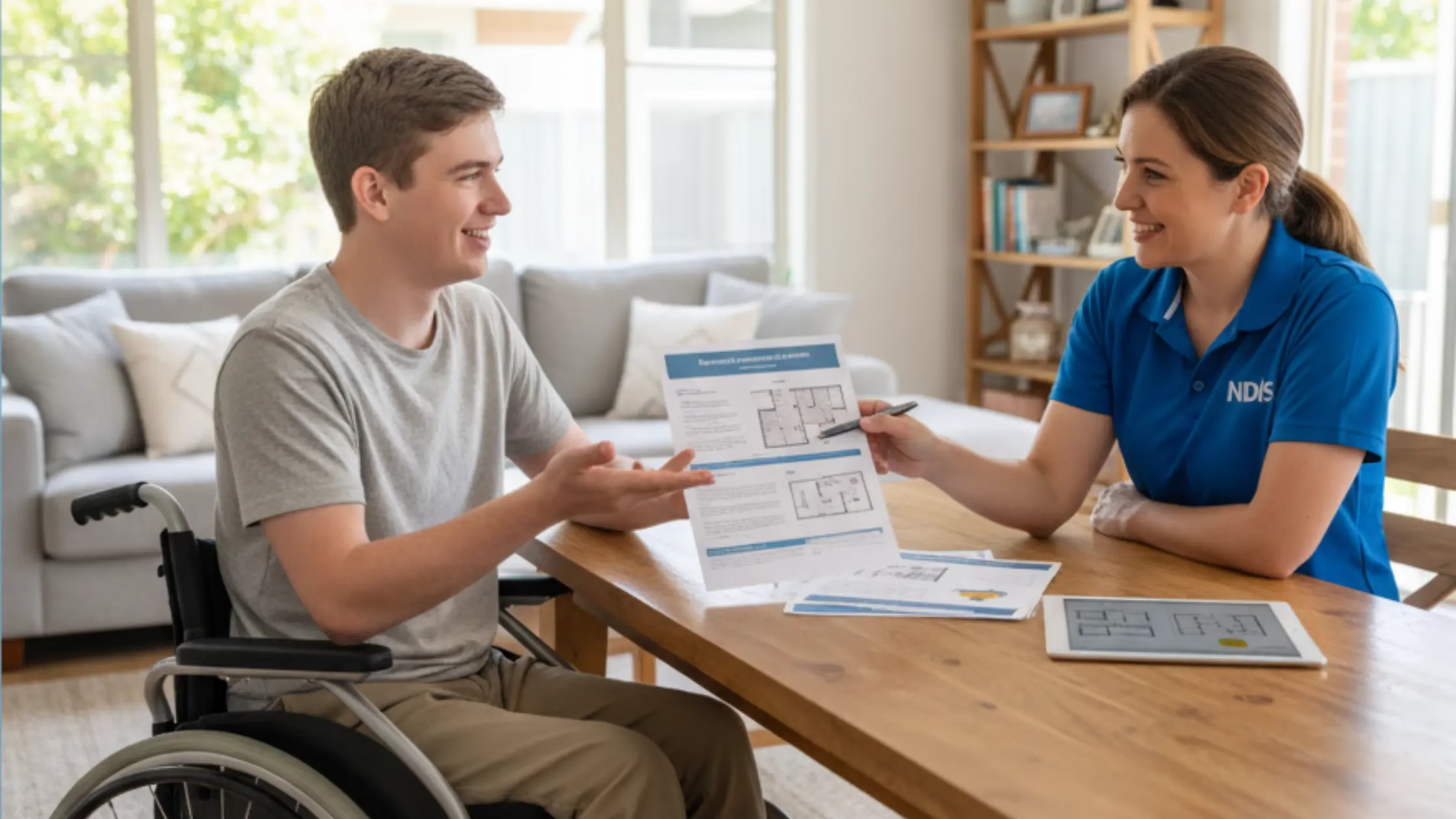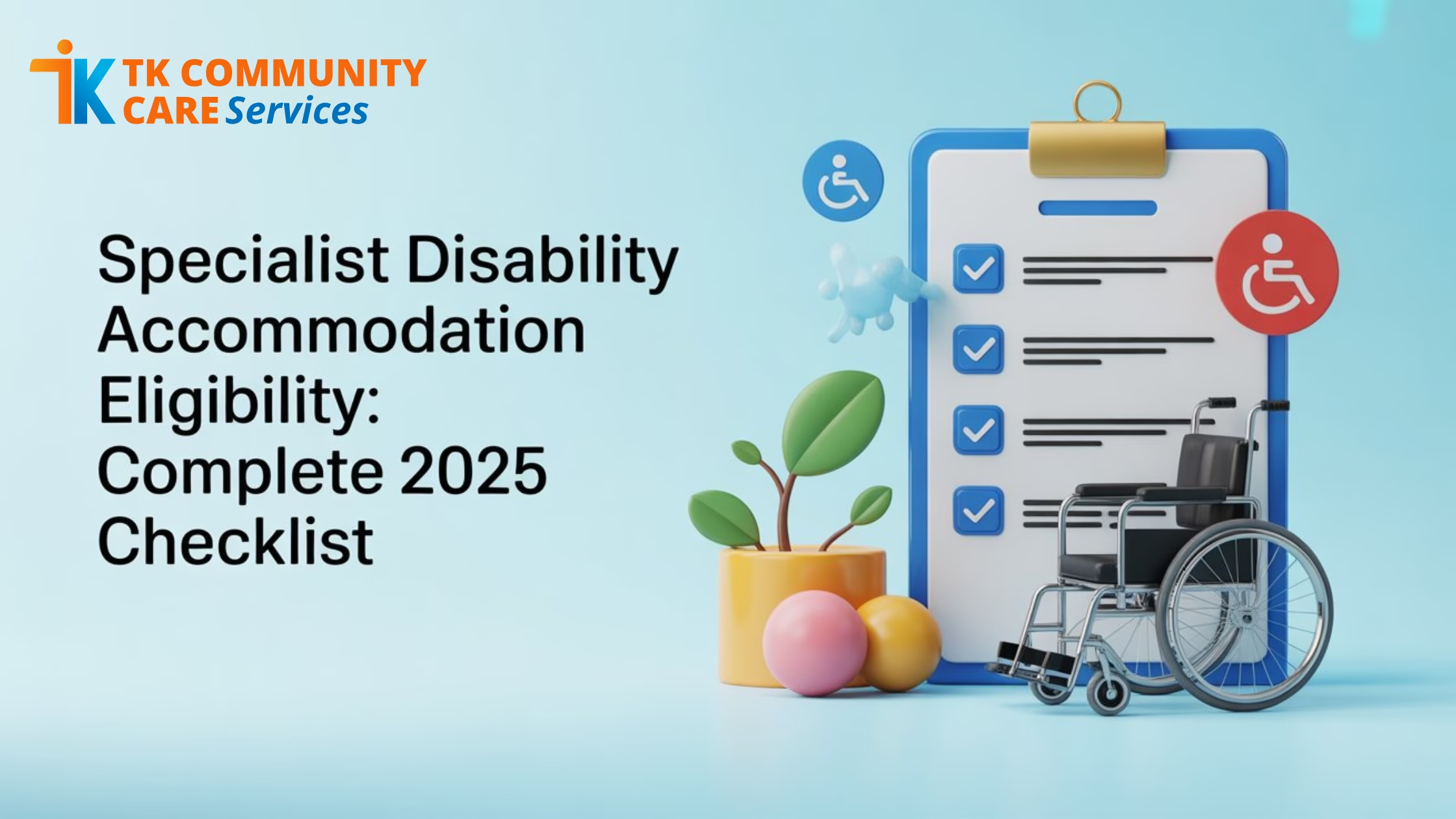Table of Contents
Finding the right housing solution when you have significant disability support needs can feel overwhelming. If you’re wondering whether Specialist Disability Accommodation might be right for you, this guide will walk you through everything you need to know about the application process.
What is Specialist Disability Accommodation?
Specialist Disability Accommodation (SDA) refers to housing built specifically for individuals with significant functional impairments or complex support requirements. Unlike regular housing, SDA properties are built or modified with specific features that help residents live more independently while receiving the support they need.
Important Note: SDA funding covers the cost of the physical accommodation itself, not the disability supports you receive while living there. Think of it as funding for the bricks and mortar of a home that’s been specially designed to meet complex needs.
Who Can Access SDA?
Before diving into the application process, it’s important to understand that SDA is designed for a small group of NDIS participants with very specific needs. You might be eligible if you:
- Require significant assistance with daily activities due to your disability
- Need housing with specialist design features to support your independence
- Have a severe functional limitation or require a high level of support
- Will benefit from living in purpose-built or modified accommodation
SDA is not simply subsidised housing. It’s specifically for people whose disability means they need a home with particular design features that standard housing cannot provide.
Step 1: Check Your Eligibility
The first step is understanding whether you meet the criteria. The NDIS SDA eligibility assessment checklist includes several key factors:
Functional Capacity: Your disability must significantly impact your ability to complete daily tasks. This is measured through assessments that look at how you manage activities such as personal care, mobility, and communication.
Support Needs: You’ll need to demonstrate that you require substantial support throughout the day or night, and that specialist housing design would reduce your reliance on support workers or improve your quality of life.
Reasonable and Necessary: The NDIS must determine that SDA funding is reasonable and necessary for you. This means proving that standard housing cannot meet your needs, even with modifications or assistive technology.
Step 2: Gather Your Evidence
Before applying, collect comprehensive documentation that supports your case. This includes:
Medical and Allied Health Reports: Recent assessments from your occupational therapist, physiotherapist, medical specialists, and other health professionals. These reports should clearly describe your functional limitations and housing needs.
Current Support Documentation: Records showing your current support arrangements, including the hours and type of support you receive.
Housing Assessment: An occupational therapy assessment specifically focused on your housing needs. This assessment should detail the specific design features you require and explain why standard housing is insufficient.
Providing strong supporting evidence can greatly improve your chances of approval. Don’t rush this step—thorough documentation makes a significant difference.
Step 3: Request an SDA Assessment
Contact your NDIS planner or Local Area Coordinator (LAC) to request an SDA assessment. Let them know you believe you meet the eligibility criteria and have the documentation to support your application.
The NDIA may arrange for an independent assessment to evaluate your needs. This assessment will examine your functional capacity, current living situation, and how SDA would improve your independence and quality of life.
Be prepared to clearly articulate why you need Specialist Disability Accommodation. Focus on specific examples of how your current housing limits your independence or creates risks to your wellbeing.
Step 4: Submit Your Application
Once you’ve gathered all documentation, formally submit your SDA application during your NDIS planning meeting. Your application should include:
- A completed SDA application form
- All medical and allied health reports
- Your housing needs assessment
- Letters of support from your support team
- Details about your current living situation and why it’s inadequate
Consider working with a support coordinator or advocate who understands the SDA application process. They can help ensure your application is complete and compelling.
Step 5: Attend Your Planning Meeting
Your NDIS planning meeting is crucial. Come prepared to discuss:
- Your specific disability-related housing needs
- How SDA design features would support your goals
- Your preferred living arrangements (living alone, with others, location preferences)
- How SDA fits into your broader support plan
Be honest and detailed about your daily challenges. Help your planner understand exactly how your current housing creates barriers to your independence.
Step 6: Wait for the Decision
After submitting your application, the NDIA will review all information and make a decision. This process can take several weeks to months. During this time, the NDIA may:
- Request additional information or assessments
- Consult with your support team
- Visit your current accommodation
Stay in regular contact with your planner and respond promptly to any requests for additional information.
What Happens If You’re Approved?
If approved, SDA funding will be included in your NDIS plan. You’ll receive funding for a specific SDA category based on your needs (Improved Liveability, Fully Accessible, Robust, or High Physical Support).
Your next steps will involve:
- Finding suitable SDA properties in your preferred location
- Coordinating with SDA providers
- Arranging your support services
- Planning your move
If Your Application Is Denied
Don’t lose hope if your initial application is unsuccessful. You have the right to:
- Request a review of the decision
- Provide additional evidence
- Appeal to the Administrative Appeals Tribunal if necessary
Many successful SDA applications are approved on the second or third attempt once additional documentation is provided.
Connect with TK Community Care for Support
The process of applying for SDA can be complex, and we know how challenging it is to navigate the NDIS system alone.
At TK Community Care, we are here to help you move forward. Whether you need support with gathering documentation, fully understanding the NDIS SDA eligibility assessment checklist, or preparing for your planning meeting, our professional team can make the entire process smoother and more successful.
Ready to start your journey to a new home? Contact us today to discuss your support needs.



